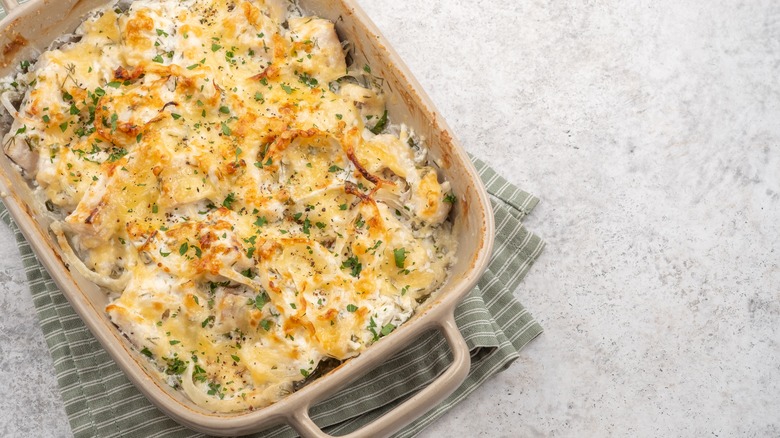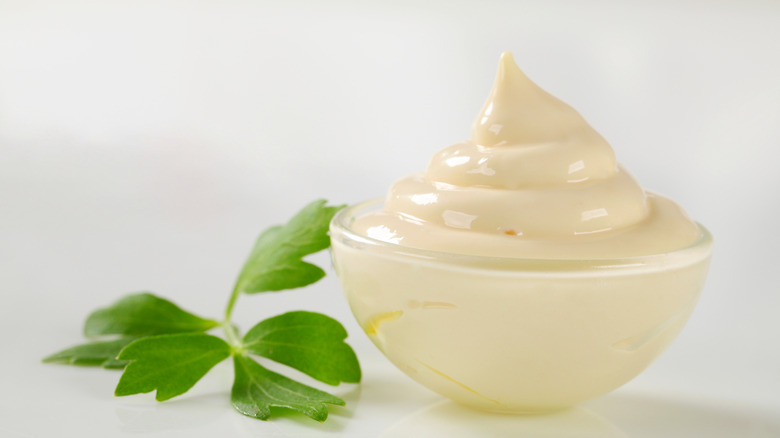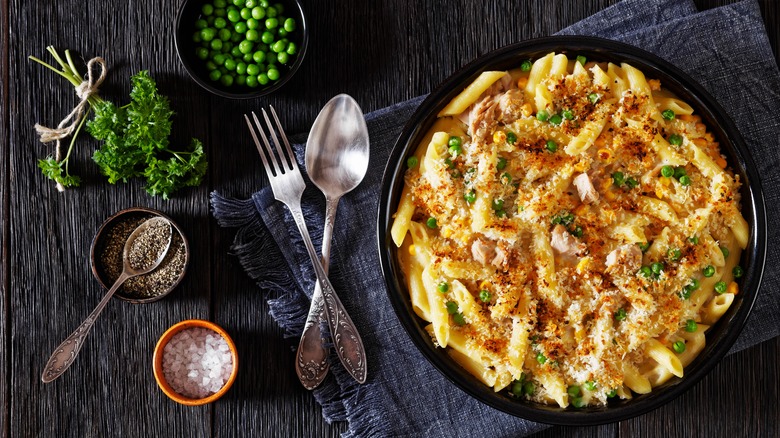Hold Your Casserole Together With Good Ol' Mayonnaise
In a statement made to Popular Science by food sensory consultant Herbert Stone, "The percentage of people who don't like mayo [is] probably close to 20 percent." However, the population that dislikes mayonnaise often neglects to understand that it has many uses in the kitchen that go beyond its purpose as a simple condiment. Most people know about its uses in grilled cheese by now. It works great as an egg substitute in cookies, and you can even baste your fish in it to keep your seafood juicy and flavorful.
But mayo has even more applications than that because of how well it works as a binding agent. Mayo has a fantastic ability to pull foods together and keep them there, and that ability makes it fantastic for one food in particular: casseroles. If you want your casseroles to be flavorful and hold together, you should use some mayo.
Mayo is the glue that holds a casserole together
The very thing a lot of people can't stand about mayo — its texture — is what makes it so good as a binder. Mayo's rich, fatty, gelatinous nature makes it stick itself to other things very well. This principle makes mayo such a fantastic binding agent for meat, not to mention crab cakes, and the best part is that the texture disappears during the cooking process — you have any sensation that you're eating mayonnaise — but its ability to bind food does not vanish. It's basically food glue that also provides other added benefits. Think of it as a culinary adhesive that offers more than just stickiness.
Additionally, mayonnaise enhances the juiciness of dishes without making them overly moist. In casseroles, for instance, it not only improves the flavor but also ensures the ingredients meld together perfectly, providing a balanced and consistent texture.
If you really want to show off, make your mayo from scratch
How can you incorporate mayo into a casserole? It's simple: Mix it with the other ingredients during the layering process. But what if you want to go the extra mile? People talk about making casseroles from scratch, but if you're really going to say that, shouldn't your mayo be from scratch, too?
Mayo is an emulsion, meaning you're taking two things that don't normally like to go together and forcing them to mix. In the case of mayo, those two things are oil and an acid, either vinegar or lemon juice, while egg yolks act as the binding agent for the two. Basically, you want to take egg yolks, whisk them with the acid, then add oil to the mixture very slowly while continuing to whisk rapidly. You can season it to taste once you've gotten the consistency right.
Eggs themselves are the reason why mayo is so good for achieving its binding purpose in casseroles — but the end result of emulsifying this mixture into mayo is something that tastes far better than just eggs. And if you made your mayo from scratch, it'll be even better — as a bonus, you can feel proud of what you've accomplished in the kitchen.


